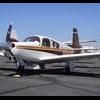Mixture settings? Backfiring and burping on T/O
-
Members Online
- jcolgan
- anthonydesmet
- PT20J
- M20C Driver
- gwav8or
- Max Clark
- Graf_Aviator
- Jim F
- AlexLev
- lamont337
- McMooney
- zgasman
- Guillaume
- IvanP
- Alan Maurer
- Kirch56H
- N201MKTurbo
- Crawfish
- Kelingreen
- tls pilot
- Rodeo John
- Sixstring2k
- MatthiasArnold
- bluehighwayflyer
- BenjaminK
- Fly Boomer
- EricJ
- Floyd
- Jeff Uphoff
- johnwheeler
- Justin Schmidt
- neilpilot
- Rwsavory
- pmccand123


Recommended Posts